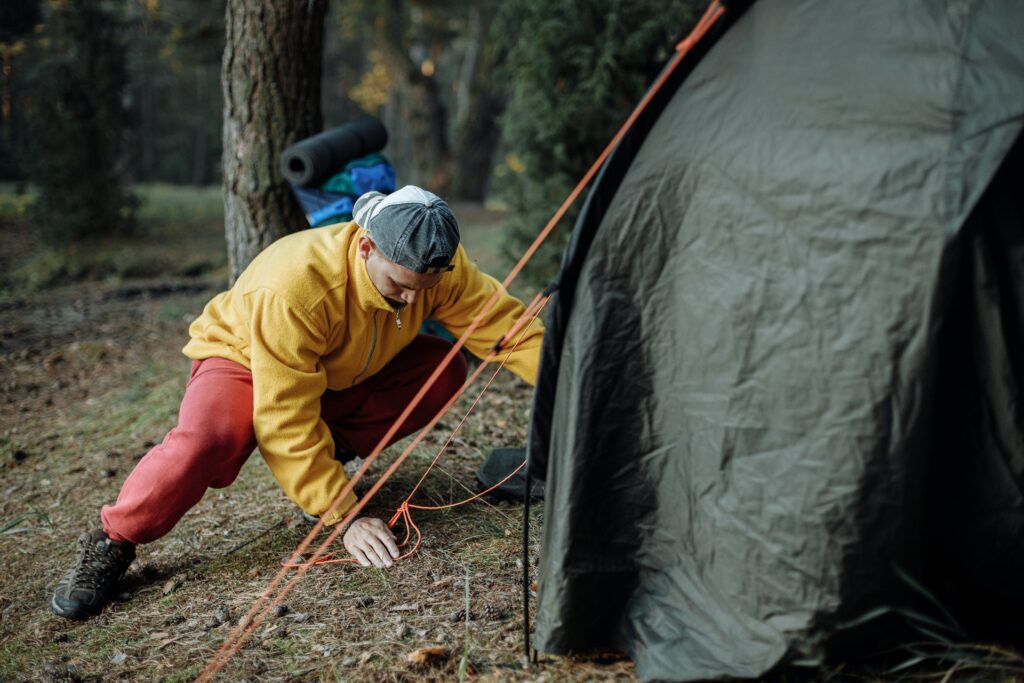Camping alone offers a lot of benefits. It gives you a total sense of freedom and even a boost of confidence. But when solo camping, there are a few more considerations to make in terms of safety. Besides packing the Ten Essentials including a flashlight and first aid kit, there are a few more items you might want to pack. Plus, keeping your food preserved in a rolling cooler and stored in the car is much easier than constantly worrying about critters and bears.
Ready for your first solo camping trip? Before you head out unaccompanied, here are some tips to keep in mind to make your adventure go smoothly. Click here to learn more about the prepper’s guide to survival.
Pick a Safe Campsite
While it’s generally safer to camp with a friend or a group in the backcountry wilderness, you can go car camping alone relatively easy. Car camping at a state or national campground park site, surrounded by other sites with families or even other solo campers, can give you a sense of safety. While you still enjoy camping alone in your own tent, help is available through camp rangers, hosts and everyone around you should you need it.
Still want a little more distance from people? With booking sites like Hipcamp, you can explore all types of private camping spots, from rustic huts in a forest to open fields on farmlands. Your only neighbors will be your hosts, who generally leave you at peace unless you need something. Many Hipcamp locations feel like they’re off the beaten path, while still offering a closer proximity to towns and cities in case of an emergency.
More than choosing the site itself, make sure the site or area has reliable cell service. If you’re unsure, call the park directly or ask the Hipcamp host. Also, consider the types of animals that might roam the area. Chances are, you have nothing to worry about – but when you’re solo camping, it’s good to take proper precautions.
Calm the Mind
When solo camping, you might want to camp for more than one or two nights. Solo camping takes some getting used to. The first night you might be nervous or anxious, sitting up in your tent at every snapping twig. After all, your imagination can be your own worst enemy. A sleepless night in a tent wondering when the axe murderer will show up doesn’t make for a fun experience. And this, my friends, will put a bad taste in your mouth for sure.
Instead, try to book a solo camping trip for at least two to three nights. While the first night is a bit nail-biting, you will finally slip into the groove and be able to calm the mind. It also helps to distract yourself a bit, bringing along some books to read or a journal to make notes about the activities or hiking trails you took that day.
Another great tip? Take your dog. Solo hiking is really about less people, but a furry companion can make you feel more comfortable and secure. A dog can alert you to real danger, barking at any threats.
Pack for Your Safety
Solo camping requires you to be extra diligent when it comes to your personal safety. Aside from taking the proper clothing and gear, such as moisture-wicking outerwear and a warm sleeping bag for cooler nights, camping alone requires a few more thoughts. After all, you have to fend for yourself.
Besides the big picture items you need to survive, consider carrying other items like a first aid kit, a knife and an extra headlamp or flashlight with spare batteries. Since we mentioned cell service earlier, there’s one thing you should consider: That the site doesn’t have cell service or your phone breaks or loses power. For your safety, make sure to store your phone and its charger in a watertight pouch to avoid moisture and to carry a GPS emergency locator device or satellite phone should you need it. It’s always a good rule of thumb to carry a paper map and learn how to read a topographical map, too. A flare and a whistle are also good items to carry solo camping.
Another option is carrying a handheld CB radio. CB radio or citizens band radio is a handy device that’s used by many professional drivers to communicate with each other. A CB radio can help you call for help in case of an emergency, and you’re stuck in an area without mobile phone reception. You can also use it to get news updates on the radio and tune in to weather channels in case of sudden weather changes or a natural disaster.
Other than that, make sure to pack enough food and water. Actually, make sure to pack more than is necessary – about three days extra to be exact. Car camping solo should make this easier, allowing you to store your food in the car without the added worry of needing a bear can.
Don’t Tell People You Are Solo Camping
Source: maruco/Shutterstock.com
It’s always a good idea to tell a family member or friend your solo camping itinerary. This way, if you fail to return home, they know what campground to contact. But that’s not what we’re talking about here. What we mean is to avoid announcing to strangers that you are camping alone – in person or online. Sure, it might be common sense not to announce to the gas station attendant you’re all alone with a pack of strangers waiting in line behind you (isn’t this a horror movie trope?), but you need to be mindful of how you share info in a digital format, too.
When it comes to solo camping, try to be quiet and away from online media. While it’s wonderful to take travel photos, share them after or, at the very least, don’t mention specific locations or geo-tag your campground or campsite. This makes you a bit vulnerable. Plus, camping invites you to unplug and get back to nature anyway.
Again, it’s imperative to tell someone you trust your solo camping itinerary. Give them all the details they need, including your estimated departure and arrival times, as well as the campground or Hipcamp you are headed to. If something happens to you and you send for help, they can react quickly and send for the help you need instead of search parties trying to figure out where you are. You can also use sites like What3Words, which uses coordinates to share your exact location.

